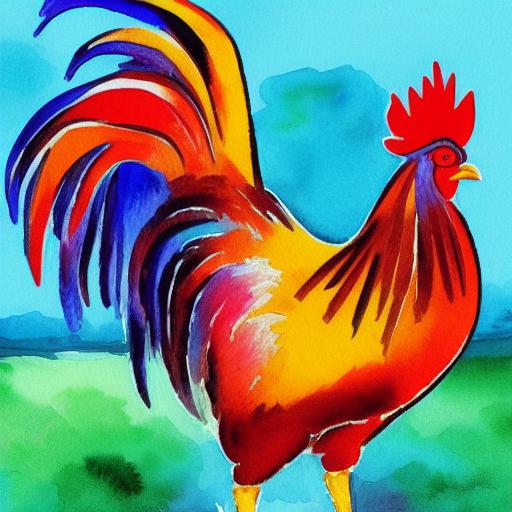Watercolor painting
Watercolor art is a type of painting that uses water-soluble pigments to create vibrant and transparent images. This art form is popular among artists of all levels, from beginners to professionals, because of its versatility and expressive potential.
Watercolor paint is typically applied to paper or other absorbent surfaces using a brush. Artists can use different techniques to create a variety of effects, from soft and ethereal washes to bold and vivid strokes. The colors can be blended together, creating a beautiful range of hues and tones.
Advantages of watercolor
One of the advantages of watercolor painting is its portability. Artists can easily take their supplies with them and create on location, whether it be outdoors or while traveling. It is also a relatively inexpensive art form, making it accessible to a wide range of people.
Watercolor art can be used to create a wide range of subjects, from landscapes and portraits to abstract designs and still life compositions. With its unique characteristics and endless creative possibilities, watercolor painting is a beautiful and rewarding art form to explore.
Use of AI-generated art
AI-generated art refers to artwork that is created through the use of artificial intelligence algorithms, allowing for fast and efficient production of images. This technique offers many advantages over traditional methods of art-making, including the ability to experiment with different styles and techniques, as well as the flexibility to create designs that meet specific requirements. In addition to these benefits, AI-generated art promotes diversity and inclusivity within the art world by providing a platform for artists from various backgrounds to express their unique experiences and perspectives.
Designers can easily incorporate AI-generated art into their projects by utilizing online tools like Visual Paradigm Online. Websites such as Stable Diffusion, Midjourney, or Dalle 2 also offer artists the opportunity to generate their own AI-generated art and explore the virtually limitless creative possibilities that this technology provides.
How to create this prompt?
The AI image prompt given is very detailed and provides a lot of information that can help the AI generate an image that closely matches the desired output. Let’s break it down into its individual parts to understand how each of them influences the generated image.
Firstly, the prompt mentions that the desired output should be a watercolor painting. This information is crucial as it sets the tone for the entire image. Watercolor paintings have a unique look and feel, characterized by soft edges, transparency, and a certain level of unpredictability. Hence, the AI will have to incorporate these characteristics in the generated image to make it look like a watercolor painting.
Secondly, the prompt specifies that the reference image is of a rooster painted by Olga Boznańska. This piece of information helps the AI understand the style of painting that is required. Olga Boznańska was a neo-fauvist artist, so the generated image should also have a similar style.
The prompt also emphasizes the word “rooster” multiple times, which indicates that the AI should focus on this aspect while generating the image. The prompt even goes as far as to call the rooster “the king of roosters”, which creates an expectation of grandeur and majesty.
Overall, the prompt provides a lot of information that can help the AI generate an image that closely matches the desired output. By specifying the medium, style, reference image, and key elements, the prompt provides a clear direction for the AI to follow. However, it’s important to note that the quality of the generated image will also depend on the capabilities of the AI model and the training data used to train it.


